Nurse knowledge can improve test administration, ensure efficacy, and increase result accuracy
Takeaways:
• Three COVID-19 diagnostic testing methods are available: molecular, antigen, and antibody.
• Each method has unique advantages and disadvantages.
• Nursing knowledge can help ensure accurate testing use, interpretation, and application.
Editor’s note: This is an early release of an article that will appear in the June 2021 issue of American Nurse Journal.
In response to the COVID-19 pandemic, the healthcare industry has created several testing methodologies to detect the SARS-CoV-2 virus in those who currently are infected and antibodies in those who were previously infected. These tests were developed in record time. However, their accuracy continues to evolve as we learn more about the virus. To ensure proper test administration, procedural efficacy, and accurate results reporting, nurses must fully understand each method.
Testing methods
Various nations and certifying organizations—including the World Health Organization (WHO), Conformité Européenne, and the U.S. Food and Drug Administration (FDA)—have approved over 400 molecular, antigen, and serological antibody diagnostic tests for SARS-CoV-2. When determining which test is appropriate, nurses should consider method of sample collection, processing procedure, length of time for results, test sensitivity and specificity, test limitations, and results interpretation. Testing methods fall into three categories: molecular, antigen, and antibody.
Molecular testing
Molecular tests detect RNA from the SARS-CoV-2 virus to diagnose an active or acute COVID-19 infection. Examples include the nucleic acid amplification test (NAAT), real-time reverse transcription-polymerase chain reaction (RT-PCR), and loop‐mediated isothermal amplification (LAMP). Sample collection routes include nasopharyngeal, deep nasal, anterior nares, and oropharyngeal. Depending on laboratory capability, molecular test results can be obtained in 3 to 4 hours or up to a week; the average time is 1 to 2 days.
Hanson and colleagues recently suggested a strategy of initially obtaining an upper respiratory tract sample (nasopharyngeal swab) for SARS-CoV-2 molecular testing in hospitalized patients with suspected COVID-19 infection. If the initial sample is negative and suspicion for the disease remains high, the panel suggests collecting a lower respiratory tract sample (sputum, bronchoalveolar lavage fluid, tracheal aspirate) rather than another upper respiratory sample.
Antigen testing
Antigen tests detect surface proteins from the SARS-CoV-2 virus to diagnose an active or acute infection. Specimens are obtained from the nasopharynx and anterior nares. Antigen tests are recommended for individuals with symptoms during the first 5 to 7 days of infection. However, a Cochrane systemic review of 22 antigen test studies found that their sensitivity varied considerably, from 0% to 94%, with the average sensitivity being 56.2%, which is why a confirming RT-PCR test is recommended.
Antibody testing
Antibody testing, which requires a blood sample either from a vein or a finger prick, is used to detect a past infection. These tests are conducted using lateral flow or immunoassay tests, such as the ELISA (enzyme-linked immunosorbent assay) and the CIA (chemiluminescent immunoassay). Antibody testing can determine the presence of immunoglobulin M (IgM) or immunoglobulin G (IgG) antibodies developed in response to infection.
On average, it takes up to 3 weeks after infection for antibodies to develop and be detected in the serum. The FDA doesn’t formally evaluate the performance of antibody tests that aren’t commercially marketed before use. However, emergency use authorization is required for commercially sold antibody tests.
A study by Iyer and colleagues found that COVID-19 antibody levels remain in the blood up to 2 to 3 months after the initial infection Another study by Dan and colleagues reported that COVID-19 specific B and T cells also remain in the blood for several months after the individual has recovered. This finding suggests some possible immunity if re-exposure occurs. However, the extent and degree of immunity is unknown, with active studies currently underway.
Test advantages and disadvantages
Each of the testing methods has advantages and disadvantages.
Molecular testing
Advantages. Molecular tests, specifically the RT-PCR, are considered the Gold Standard for diagnosing SARS-CoV-2 virus. Molecular tests also are used as confirmatory tests after antigen testing because they’re highly accurate with a sensitivity and specificity greater than 95%. Research demonstrates that RT-PCR is less likely to yield false negatives compared to other testing modalities. The RT-PCR test also is beneficial in determining whether an individual has an active COVID-19 infection detectable within their test sample. If so, they’re presumed to be infectious when the sample is collected.
WHO guidelines seem to offer a more collectively inclusive recommendation for determining infectious correlation using RT-PCR testing results. Most people who test positive will test negative after isolating for 13 to 14 days, as recommended by the WHO; the CDC recommends 10 days. Individuals who test positive for longer than that are rare. Studies indicate that some who test positive for 2 to 3 months are immunocompromised or experiencing symptoms. More evidence is needed to determine if a direct correlation exists between the viral load found within a sample and the individual’s ability to spread the infection.
Disadvantages. Reports indicate that accuracy of RT-PCR results rely heavily on sample collection timing, type, storage, handling, and processing. The tests diagnose active infection only; they can’t detect whether an individual was infected previously. A false negative result is possible if the sample isn’t properly obtained or if an individual is tested too early after exposure to the virus or too late in their infection.
In the later stages of the disease (>7 days postexposure), samples from the lower respiratory tract (sputum, tracheal secretions, bronchoalveolar lavage) may yield higher rates of detection but are more invasive for the patient. The deep nasopharyngeal swab technique has been reported to be very uncomfortable for some adults and small children. New minimally invasive methods have emerged, such as nasal, throat, saliva, and self-administered swabs available at major pharmacies throughout the United States. These minimally invasive testing methods have been crucial in detecting and tracking infection, but they have limitations, which nurses should be aware of.
For example, molecular diagnostic tests are complicated and expensive to perform. They require laboratory personnel who are competent using specialized lab equipment and reagents. With public health emphasis on testing to decrease virus transmission, the increased molecular testing volume has resulted in some labs becoming backlogged with reporting test results, some taking as long as 14 days. Long turnaround times create the potential for individuals infected with COVID-19 and awaiting test results to transmit the virus unknowingly to others, which also creates challenges for contact tracing.
Antigen testing
Advantages. Antigen tests produce results faster than molecular tests do; point-of-care tests yield results in as little as 15 to 30 minutes. In addition, antigen tests are less expensive compared to RT-PCR tests and don’t require specialized laboratory technique. Antigen testing offers quick screening and detection of COVID-19 among high-risk groups and in high-congregate environments (such as prisons and long-term care facilities). According to the Centers for Disease Control and Prevention (CDC), the sensitivity for antigen testing varies among the tests that have received emergency use authorization. The WHO recommends a minimum of 80% sensitivity and 97% specificity for antigen-detecting rapid diagnostic testing.
Disadvantages. Despite the fast-turnaround time for antigen testing results, a significant disadvantage is the lack of widely available and affordable at-home testing kits in some communities. Most antigen tests are performed at a hospital, clinic, or pharmacy and require travel time to and from the testing site.
The FDA recently issued an alert about the potential for false positives. In addition, a Cochrane systematic review of 22 antigen test studies found that sensitivity varied from 0% to 94% (average 56.2%). False negative results also can occur if samples don’t have a sufficient amount of viral protein to yield a positive test, making these tests less sensitive and less accurate than molecular tests.
In addition, because antigen tests are qualitative, they can be inaccurately interpreted due to reader error. If an antigen test is negative, a confirmatory RT-PCR test is recommended.
Antibody testing
Advantages. Antibody testing can identify previously infected individuals who are asymptomatic. This information is essential for guiding transmission control measures such as quarantine, isolation, and social distancing, as well as the closure of schools, places of worship, and businesses. Another benefit of antibody testing is that it can aid in vaccine development and efficacy. The testing can identify which parts of the virus the immune system responds to and should be targeted during vaccine development.
Disadvantages. A significant limitation of antibody tests is that the correlation of antibody levels with immunity is uncertain. Testing positive for IgG antibodies, which indicates recovery from COVID-19 infection, doesn’t guarantee immunity from re-infection. Because individuals with IgG antibodies may still carry and transmit the virus, they should continue to follow CDC guidelines regarding mask wearing, hand hygiene, and social distancing.
To further complicate antibody testing, some individuals don’t develop detectable IgG or IgM antibodies after infection. This means that the absence of detectable antibodies doesn’t rule out a previous COVID-19 infection. Currently, over 100 antibody tests are available or in development. They don’t all have the same level of sensitivity and specificity. The lack of standardization for validating antibody tests in the United States makes their quality variable and test interpretation complex. Relying on antibody tests to make decisions about individual immunity or back-to-work orders is problematic.
Nursing implications
Nurses should possess the fundamental skills and knowledge to perform COVID-19 diagnostic tests as ordered, especially as the need for expanded testing continues to increase. In addition, they should learn to detect infections during symptom screening and how to interpret test results. (See Interpreting results.)
Interpreting results
Use this table as a guide to interpreting COVID-19 test results.
| Test | Result | Interpretation | Recommendations |
| Molecular testing | Positive | Active infection | ● Isolation ● Safety precautions ● Symptom monitoring |
| Negative | No active infection | ● Safety precautions | |
| Antigen testing
| Positive | Active infection | ● Safety precautions ● Symptom monitoring |
| Negative | No active infection | ● Safety precautions | |
| Antibody | Positive | Past infection and recovered | ● Safety precautions ● Symptom monitoring |
| Negative | No past infection | ● Safety precautions |
Source: fda.gov/media/140161/download
Given continually emerging information about the virus and testing guidelines, nurses must stay current with evidence-based recommendations. (The information in this article is current as of April 10, 2021.)
Following the ongoing research will help ensure nurse competency regarding COVID-19 testing methodology and aid them in understanding regional epidemiological and local surveillance data. In addition, nurses can contribute to enhancing nursing practice by participating in COVID-19 research focused on practice implementation and policy development. As members of the frontline healthcare team, they also can support research by collecting and analyzing data.
The COVID-19 pandemic has shifted the nursing education landscape. Nursing schools have begun to revamp their curricula to include concepts relevant to the pandemic. The American Association of Colleges of Nursing released a document recommending that U.S. schools of nursing address COVID-19 preparedness and response, including diagnostic test interpretation, symptom assessment, and evaluation and intervention for patients diagnosed with a current or previous COVID-19 infection.
Stay armed
The increased demand for COVID-19 testing has led to the rapid development of testing methods and the parallel growth in knowledge, including limitations and advantages of each method. COVID-19 testing is a pivotal component of public health strategies for curbing the spread of the disease. Nurses armed with information about COVID-19 testing are well-positioned to screen patients, provide education, advocate for patients and families, and prevent transmission.
Francisca-lenae Egbuna is the owner of NAIE LLC, in Binghamton, New York. Jean McHugh is an associate professor and director of the Accelerated BS in Nursing Program at SUNY Downstate Health Sciences University College of Nursing, in Brooklyn, New York. Myriam Jean Cadet is adjunct nursing faculty at SUNY Downstate Health Sciences University College of Nursing.
References
Afzal A. Molecular diagnostic technologies for COVID-19: Limitations and challenges. J Adv Res. 2020;26:149-59. doi:10.1016/j.jare.2020.08.002
American Association of Colleges of Nursing. Considerations for COVID-19 preparedness and response in U.S. schools of nursing. March 20, 2020. aacnnursing.org/News-Information/COVID-19/AACN-Recommendations
Binnicker MJ. Challenges and controversies to testing for COVID-19. J Clin Microbiol. 2020;58(11):e01695-20. doi:10 .1128/JCM.01695-20
Cadet MJ. COVID-19: Understanding testing. Workplace Health Saf. 2020;68(12):583. doi:10.1177/2165079920967966
Centers for Disease Control and Prevention. Overview of testing for SARS-CoV-2 (COVID-19). March 17, 2021. cdc.gov/coronavirus/2019-ncov/hcp/testing-overview.html
Dan JM, Mateus J, Kato Y, et al. Immunological memory to SARS-CoV-2 assessed for up to 8 months after infection. Science. 2021;371(6529):eabf4063. doi:10.1126/science.abf4063
Dinnes J, Deeks JJ, Adriano A, et al. Rapid, point‐of‐care antigen and molecular‐based tests for diagnosis of SARS‐CoV‐2 infection. Cochrane Database Syst Rev. 2020;8:CD013705. doi:10.1002/14651858.CD013705
Food and Drug Administration. Coronavirus disease 2019 testing basics. April 2, 2021. fda.gov/consumers/consumer-updates/coronavirus-disease-2019-testing-basics
Green K, Winter A, Dickinson R, et al. What tests could potentially be used for the screening, diagnosis and monitoring of COVID-19 and what are their advantages and disadvantages? University of Oxford Centre for Evidence-Based Medicine. April 20, 2020. www.cebm.net/covid-19/what-tests-could-potentially-be-used-for-the-screening-diagnosis-and-monitoring-of-covid-19-and-what-are-their-advantages-and-disadvantages
Hanson KE, Caliendo AM, Arias CA, et al. ISDA guidelines on the diagnosis of COVID-19: Molecular diagnostic testing. December 23, 2020. www.idsociety.org/COVID19guidelines/dx
Harvard Health Publishing. If you’ve been exposed to the coronavirus. March 12, 2021. health.harvard.edu/diseases-and-conditions/if-youve-been-exposed-to-the-coronavirus
He X, Lau EHY, Wu P, et al. Temporal dynamics in viral shedding and transmissibility of COVID-19. Nat Med. 2020;26(5):672-5. doi:10.1038/s41591-020-0869-5
Iyer AS, Jones FK, Nodoushani A, et al. Persistence and decay of human antibody responses to the receptor binding domain of SARS-CoV-2 spike protein in COVID-19 patients. Sci Immunol. 2020;5(52):eabe0367. doi:10.1126/sciimmunol.abe0367
Maxton F, Darbyshire P, Thompson DR. Research nurses rising to the challenges of COVID‐19. J Clin Nurs. 2021;30(5-6):e13-15. doi:10.1111/jocn.15504
Meng X, Wang D, Wang H, et al. COVID‐19 diagnostic testing: Technology perspective. Clin Transl Med. 2020;10(4):e158. doi:10.1002/ctm2.158
Peeling RW, Olliaro PL, Boeras DI, Fongwen N. Scaling up COVID-19 rapid antigen tests: Promises and challenges. Lancet Infect Dis. 2021. doi:10.1016/s1473-3099(21)00048-7
Shuren J, Stenzel T. Covid-19 molecular diagnostic testing—Lessons learned. N Engl J Med. 2020;383(17):e97. doi:10.1056/NEJMp2023830
Surkova E, Nikolayevskyy V, Drobniewski F. False-positive COVID-19 results: Hidden problems and costs. Lancet Respir Med. 2020;8(12):1167-8. doi:10.1016/S2213-2600(20)30453-7
Wang W, Xu Y, Gao R, et al. Detection of SARS-CoV-2 in different types of clinical specimens. JAMA. 2020;323(18):1843-4. doi:10.1001/jama.2020.3786

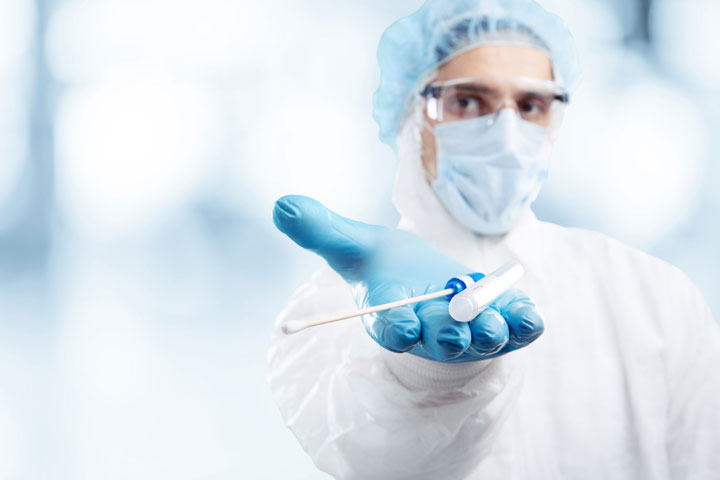







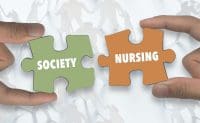
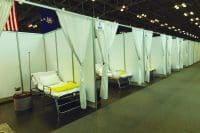
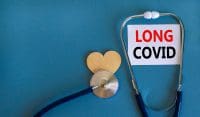

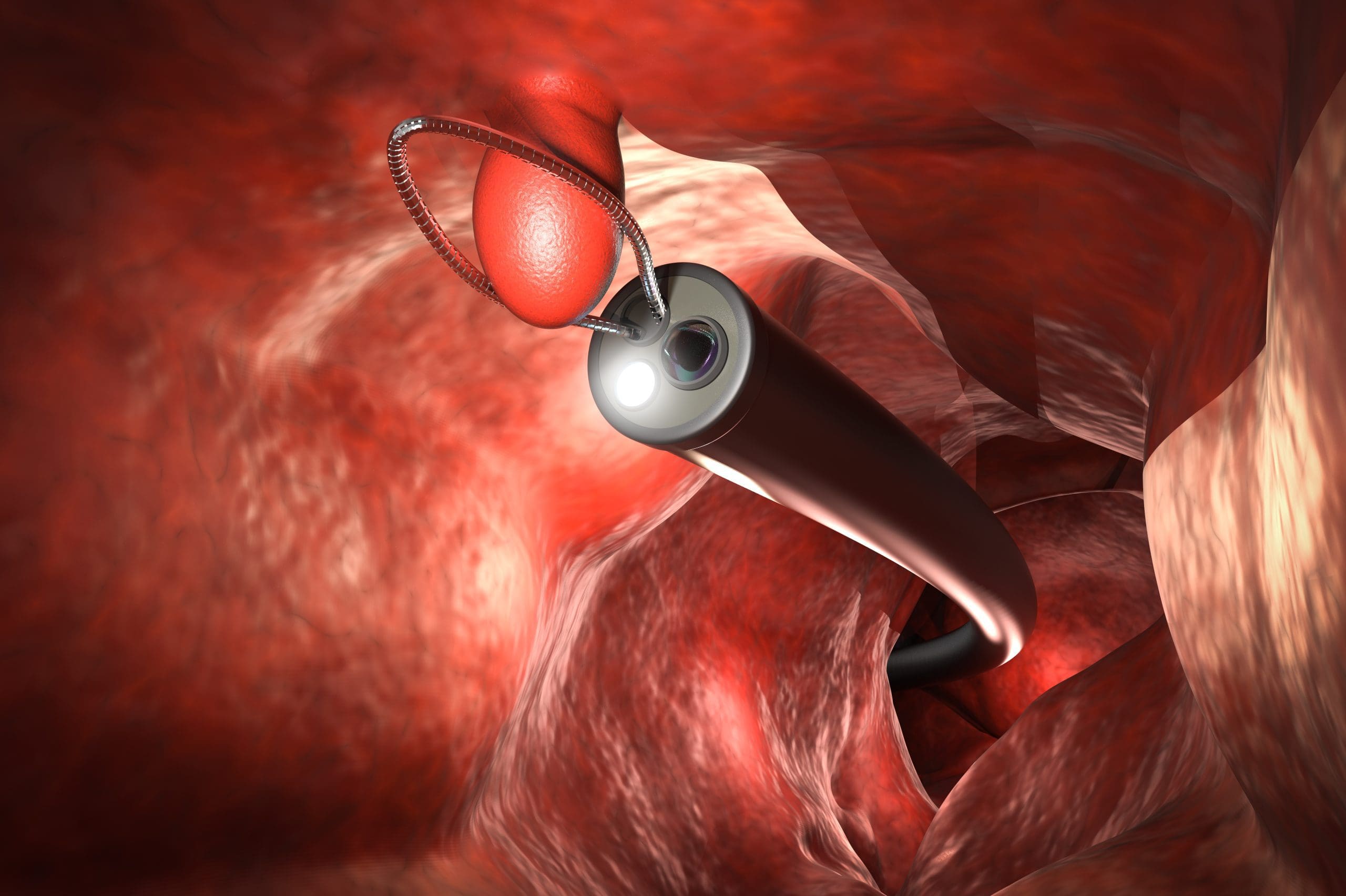





1 Comment.
Wow!